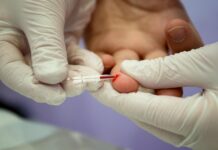GOTEBORG: One novel approach to treating type 1 diabetes may involve blocking the somatostatin hormone to stop harmful blood glucose dips. A study carried out at the University of Gothenburg, among other places, has demonstrated this. It is claimed that the suggested course of action could save lives.
When blood glucose levels fall in healthy people, the hormone glucagon is released, which aids the liver in producing glucose and brings blood glucose levels back to normal. Glucagon raises blood glucose levels in the body in the opposite way that insulin does. The pancreas produces both hormones.
Not only do those with type 1 diabetes lack glucagon, but they also lack insulin. Dangerously low blood sugar results from the failure of glucagon to be produced during a dip in blood sugar.
The current study, which is published in the journal Nature Metabolism, presents a new potential treatment strategy against dangerous blood sugar drops in type 1 diabetes. One of the leading researchers is Patrik Rorsman, Professor of Cellular Endocrinology at the Sahlgrenska Academy at the University of Gothenburg and also active at the University of Oxford.
The researchers examined groups of hormone-producing cells from the pancreas of both humans and mice. They were able to show that in type 1 diabetes, these islets are unable to release glucagon when blood sugar is low. This is because the hormone somatostatin is released in greater amounts in type 1 diabetes and inhibits the release of glucagon.
Meanwhile, experiments showed that blocking somatostatin in mice with type 1 diabetes could restore the ability of the pancreas to release glucagon in the event of low blood sugar, thus preventing dangerously low blood sugar levels. The blocking was done pharmacologically.
Using genetically modified mice in which beta cells were activated by light, known as optogenetics, the interaction between different cell types in the pancreatic islets was also mapped: alpha cells that release glucagon, beta cells that release insulin and delta cells that release somatostatin.
The results provide an underlying explanation for how the reduced proportion of functioning beta cells in type 1 diabetes can be linked to the increased risk of blood sugar drops, something that has so far been unclear.
Anna Benrick is Associate Professor of Physiology at the Sahlgrenska Academy at the University of Gothenburg and one of the co-authors.
“The new findings highlight an important and previously unknown role of electrical signaling that occurs through open cell connections between beta cells and delta cells,” she says. “If the electrical connections are lost, then the release of glucagon is reduced and the risk of a drop in blood pressure increases. The fact that this can be restored pharmacologically by blocking somatostatin opens up the possibility of preventing dangerous blood sugar drops in type 1 diabetes.” (ANI)
Also Read: Why night owls are at higher risk of diabetes







